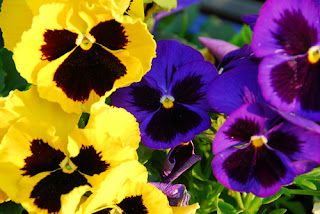 |
| Succulent wreath |
Another year draws to an end. With Christmas around the corner I was was thinking of how we can bring our garden into our home during this festive season. I searched the web and had a few inspired ideas of my own. Instead of rushing off to stores and buying decorations why not make your own original organic decorations? This succulent wreath looks better than any plastic store bought one and much more Eco friendly.If you lucky enough to be by the sea why not make a wreath out of drift wood, or unusual twigs.
 |
| an unusual wreath made with terracotta pots! |
 |
| A Clematine wreath |
I love this idea it is unusual and attractive. Instead of air plants you could put dried seed pods in the balls, or fill half the ball with a little water and place red and white roses inside!
 |
| Glass ornaments with air plants |
 |
place red and white flowers inside for a more festive feel
|
We have a huge selection of amazing succulents in our country that really are not used to their full potential. These little water wise beauties make beautiful eye catching decorations!
  |
Succulent ornamental ball
|
During these hot summer holidays why not pick a few herbs and berries from your Organic Vegetable herb gardens and make them into ice cubes to decorate all those Christmas cocktails with.
 |
Ice blocks that will glam up any drink
|
Fill your home with a festive aroma.Oranges studded with cloves not only smell fantastic but will also look wonderful as center pieces in glass vases or bowls.
 |
| Oranges studded with cloves |
Make your own Christmas table centerpieces with recycled objects from your home and garden. Tin cans cleaned and filled with flowers from your garden create a rustic charm. Small terracotta containers can be transformed with a bit of red ribbon , rosemary and white candles.
 |
| disguise your tin can by wrapping twigs or cinnamon sticks around it |
What is Christmas without a Christmas tree. Instead of those drab plastic trees why not use one of our indigenous beauties.Get a big terracotta tub and plant it up with an indigenous tree of your choice then plant it in your garden afterwards.Or if you choose the right kind of tree leave it in the pot and place it on your patio so it is ready for the next festive season. Here are a few of my favourite indigenous Christmas trees. What are yours?
 |
| Podacarpus henkelii |
 |
| Gardenia Thunbergia |
Links: vi.sualize.us, haute-hostess.com, flikr.com, weddingfresh.blogspot.com, thepaintedhive.blogspot.com, libp.blogspot.com, MathaStewart,beeskneesbungalow.blogspot.com,marylenalynx.blogspot.com,potterybarn. Grow Wild.

















































